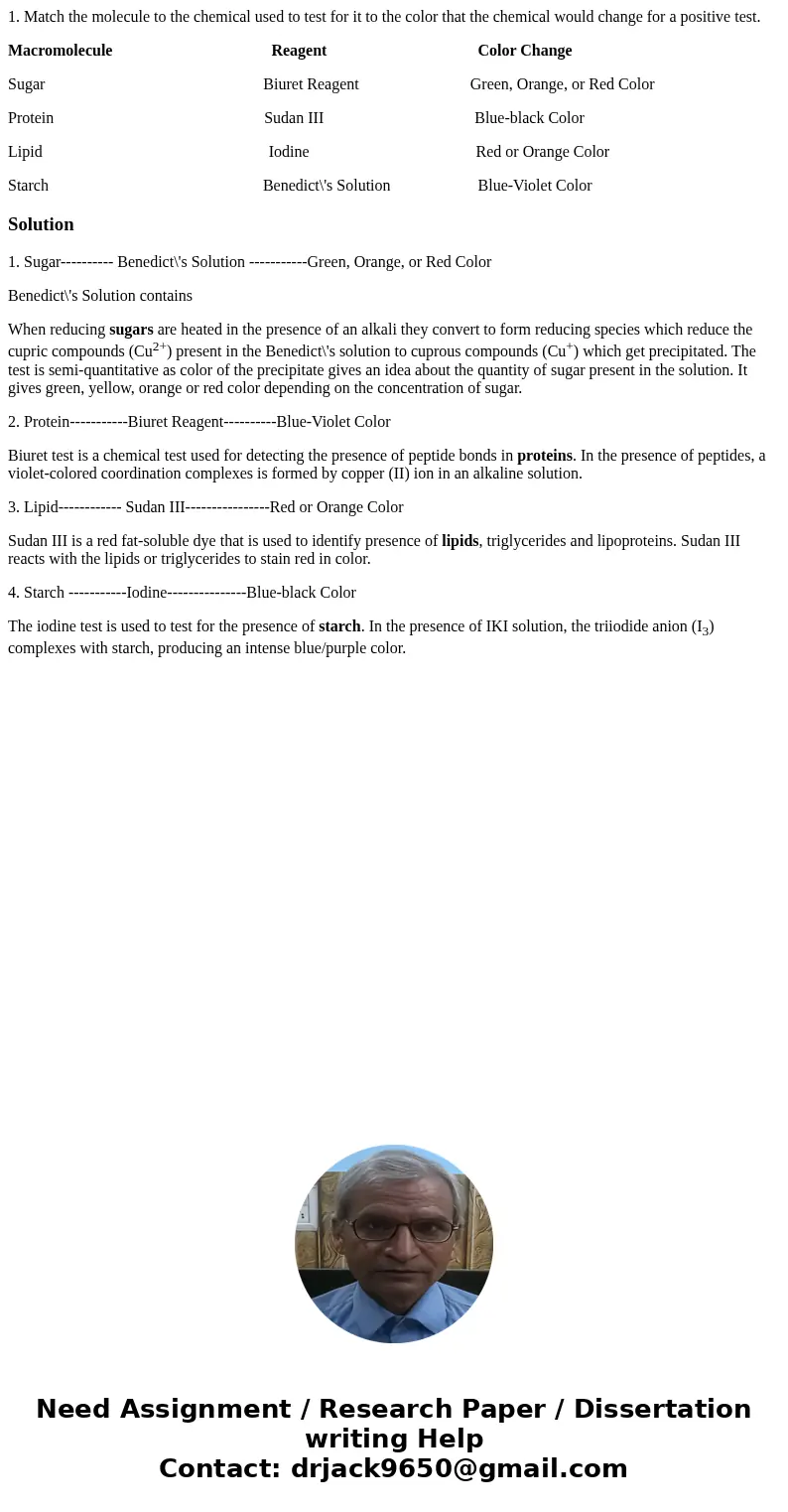1 Match the molecule to the chemical used to test for it to
1. Match the molecule to the chemical used to test for it to the color that the chemical would change for a positive test.
Macromolecule Reagent Color Change
Sugar Biuret Reagent Green, Orange, or Red Color
Protein Sudan III Blue-black Color
Lipid Iodine Red or Orange Color
Starch Benedict\'s Solution Blue-Violet Color
Solution
1. Sugar---------- Benedict\'s Solution -----------Green, Orange, or Red Color
Benedict\'s Solution contains
When reducing sugars are heated in the presence of an alkali they convert to form reducing species which reduce the cupric compounds (Cu2+) present in the Benedict\'s solution to cuprous compounds (Cu+) which get precipitated. The test is semi-quantitative as color of the precipitate gives an idea about the quantity of sugar present in the solution. It gives green, yellow, orange or red color depending on the concentration of sugar.
2. Protein-----------Biuret Reagent----------Blue-Violet Color
Biuret test is a chemical test used for detecting the presence of peptide bonds in proteins. In the presence of peptides, a violet-colored coordination complexes is formed by copper (II) ion in an alkaline solution.
3. Lipid------------ Sudan III----------------Red or Orange Color
Sudan III is a red fat-soluble dye that is used to identify presence of lipids, triglycerides and lipoproteins. Sudan III reacts with the lipids or triglycerides to stain red in color.
4. Starch -----------Iodine---------------Blue-black Color
The iodine test is used to test for the presence of starch. In the presence of IKI solution, the triiodide anion (I3) complexes with starch, producing an intense blue/purple color.

 Homework Sourse
Homework Sourse